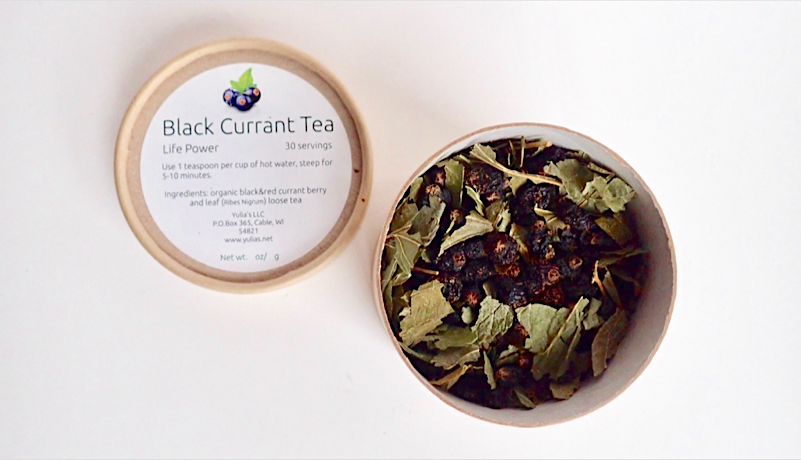Your cart is currently empty!

Russian legacy – black currant bushes in every yard
When I moved to the US 15 years ago I planted black currant bushes by the house right away. Then we moved, and the bushes came with us:-) Every garden in Russia have this woody shrub full of aromatic shiny tart berries. I remember picking them at my grandma’s garden, and then my parents’.
Northern stranger
Rides Nigrum grows in most Northern places. There are about 150 wild kinds. In was cultivated in Russia before 11th century, grown in all towns and villages. Black currant was once popular in US, but was banned in the early 1900s, when it was thought to cause (or help spread) white pine blister dust, that was threatening pine growing industry. Since then lots of states lifted the ban, and you can find it at many farms now, except still not in Maine, New Hampshire, Virginia, Ohio and Massachusetts. The ban was in place for nearly a century, so this berry is still largely unknown in the US.
Vitamin C delight
During WWII in England with the shortage of the oranges and other citrus fruit, the black currant was planted and grown commercially. Black currant syrup provided alternative vitamin C to all children younger then 2 free of charge. Japan imports $3.6 million worth of NZ black berries. The top producers are Russia, Poland and Germany.
Shake a cold off in two days
Currant is indeed high in Vitamin C, with just 20 little berries providing a daily dose of this vitamin. Berries help remove radiation with it’s high pectin and vitamin C content.
The most favorite ways of consuming the berries – fresh harvest and jams. We never seem to run out of black currant jam! It is delicious on bread with butter, or pie, smoothy or tea. In fact the tea is quite medicinal. My mom developed her own method of getting over a cold in 2 days with drinking hot black currant tea every three hours and then covering up in warm blankets to sweat it out. I serve it to my family during colds too. Fevers, tight cough, colds and flu – try it for you. Works as a throat gargle too.
Pickling friend
I love to stroll through my summer garden and collect currant leaves for making pickles (along with oak and cherry leaf), we just pack all the leaves in jars with other spices. Their Russian name Smorodina comes from the word “strong smell”, imparting that unique fragrance and notes to your pickles.
Great berry for your health
Currants are great for aches and pains, arthritis and gout, as it is an effective diuretic that removes uric acid and extra liquid in overweight individuals. The plant is great for any swollen lymph, chronic eczema, it helps to dissolves deposits (stones). It also benefits the prostate and kidney health and lowers the blood pressure. It is a wonderful liver health supporter, when jaundice or migraines are present. Also relieves diarrhea, intestinal parasites problems.
The leaves are even higher in vitamin C then the berries. The plant strengthens the capillaries and bleeding gums due to Vitamin C and rutin content.
Currants are high in Vitamin B (B1, B2, B6, B9), P, E, A and K, also iron, magnesium, potassium, silver and copper. They are a great prevention for diabetes, good restorative after the surgery and for menopausal bleeding. Also excellent for brain function and memory. Just use moderation if you have high stomach acid.
The black currant seed oil is high in vitamin E, alpha-linolenic (omega 3) and gamma linolenic (omega 6) acids – essential acids that body can not produce. It is one of the ingredients in Yulia’s Magic Seven Eye Cream.
Currants come in many different colors: black, red, white, pink, yellow and purple. Those multicolored berries were the subject of one of the first poems I learned as a young child.
How to plant
Plant the currant bush in your yard. Use a screen protection for the first few years. Throw some baby potatoes as fertilizer under the bushes, they love potassium. It makes them shoot out more branches and berries get bigger. And if you live in tropics, I have heard it is possible to grow currants if you provide a cold season for them by placing ice around the roots simulating winter conditions.
Black currant tea
If you would like to try black currant berry and leaf tea, please go to the tea section of my website. Also experiment with longer brewing, leave it overnight and see how pretty purple your tea pot gets:-)

Leave a Reply